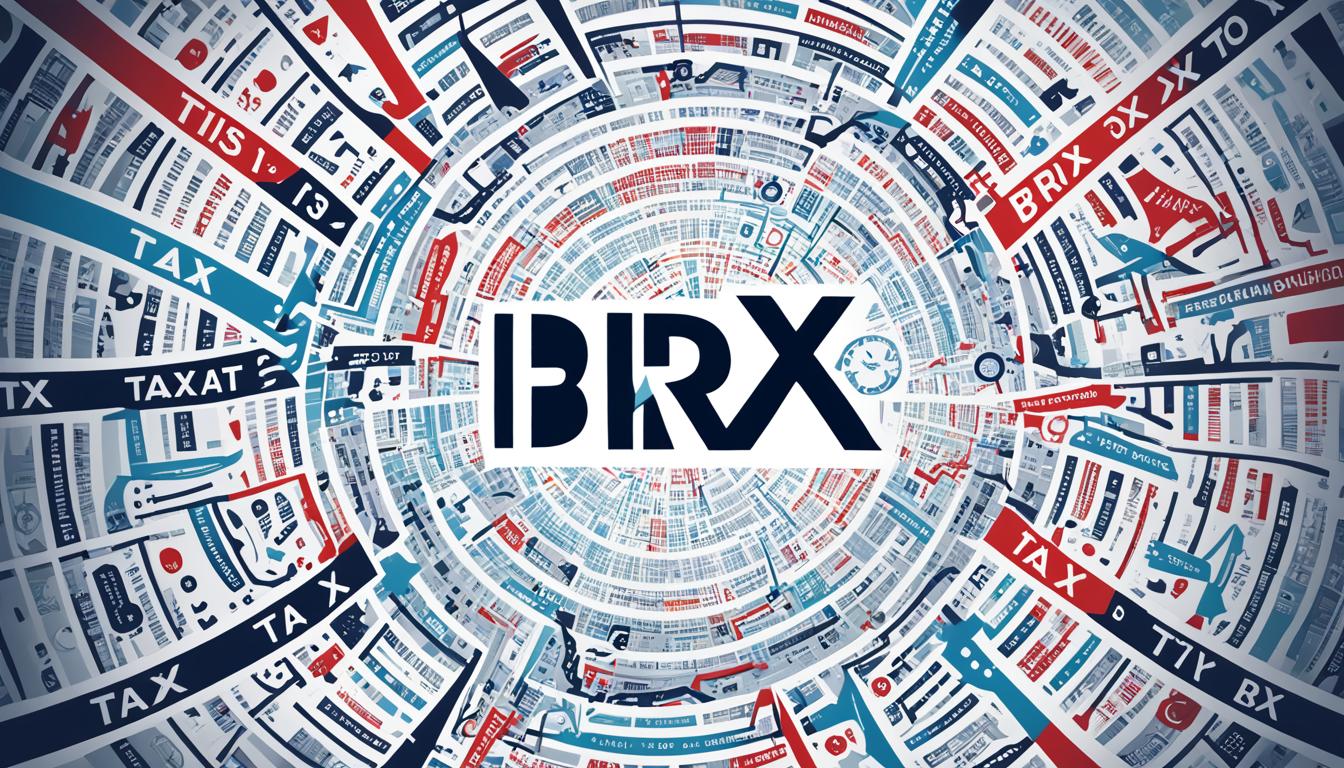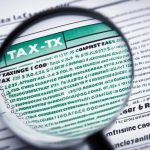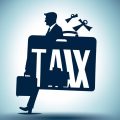If you live and work in the United Kingdom, understanding your tax code is crucial for managing your finances effectively. One common tax code you may come across is BRX. This complete guide will provide you with all the information you need to know about the tax code BRX.
Whether you’re an employee, self-employed, or receive a pension, your tax code BRX plays a significant role in determining how much tax you pay. It consists of a combination of numbers and letters that reflect your tax-free income and any specific circumstances that affect your tax liability.
This guide will cover the basics of understanding your tax code, the reasons for tax code changes, how to update your tax code with HMRC, and provide an example of how the BRX tax code works. We’ll also explain how to handle tax code adjustments and offer some practical tips to ensure you meet your tax obligations accurately.
By the end of this complete guide, you’ll have a comprehensive understanding of the tax code BRX, enabling you to navigate the UK tax system with confidence and peace of mind. Let’s get started!
Understanding Your Tax Code
Your tax code BRX consists of both numbers and letters. The numbers in your tax code reflect your tax-free income for the tax year, determined by your Personal Allowance and any untaxed income or company benefits. The letters in your tax code indicate specific situations and how they affect your Personal Allowance. Understanding your tax code’s breakdown and the adjustments made can help you comprehend your tax liability more accurately.
Let’s break it down further. Your tax code consists of four parts: the tax code letter, the tax code number, the tax free allowances, and the adjustments.
1. Tax Code Letter
The tax code letter indicates how specific situations impact your Personal Allowance. For example, if your tax code includes the letter L, it means you are eligible for the standard Personal Allowance.
2. Tax Code Number
The tax code number represents your tax-free income. It is based on your Personal Allowance, which is the amount you can earn before you start paying tax. The higher your tax code number, the more tax-free income you have.
3. Tax Free Allowances
Your tax-free allowances include your Personal Allowance, as well as any untaxed income or benefits you receive. This could include things like savings interest or income from a second job.
4. Tax Code Adjustments
Adjustments to your tax code can occur due to various factors, such as changes in your income, employment status, or benefits. These adjustments ensure that your tax code accurately reflects your current situation and tax liability.
Understanding the breakdown of your tax code BRX can help you make sense of your tax obligations. It is essential to stay updated on any changes to your tax code and ensure that it accurately reflects your circumstances. If you have any questions or concerns about your tax code, it is advisable to contact HMRC for guidance.

Reasons for Tax Code Changes
There are several reasons why your tax code BRX might change. Changes can occur due to adjustments to your personal allowance, a change in income or employment, updates from HMRC, or changes to your benefits or pensions. When your tax code changes, HMRC will usually inform you of the update and provide an explanation for the adjustment.
1. Adjustments to Personal Allowance
One common reason for tax code changes is adjustments to your personal allowance. Your personal allowance is the amount of income you can earn before you start paying tax. If your personal allowance changes, either due to legislative changes or changes in your personal circumstances, your tax code may be updated accordingly.
2. Change in Income or Employment
If there is a change in your income or employment, such as starting a new job, receiving a raise, or transitioning to part-time work, your tax code may need to be adjusted. This ensures that the correct amount of tax is deducted from your earnings based on your updated financial situation.
3. Updates from HMRC
HMRC may periodically update tax codes to reflect changes in tax laws or regulations. These updates aim to ensure accurate taxation based on the latest rules and guidelines. When HMRC makes updates to tax codes, they will notify you and provide an explanation of the changes.
Changes to Benefits or Pensions
If you receive benefits or pensions, changes to these payments can also impact your tax code. For example, an increase or decrease in your benefits or pensions may require adjustments to your tax code to align with your revised income and tax obligations.
It’s important to note that you should keep HMRC informed about any changes in your circumstances, such as changes in income, employment, benefits, or pensions. By doing so, you can ensure that your tax code remains accurate and up to date.

The table below summarizes the key reasons for tax code changes:
| Reasons for Tax Code Changes |
|---|
| Adjustments to personal allowance |
| Change in income or employment |
| Updates from HMRC |
| Changes to benefits or pensions |
Updating Your Tax Code
If you find it necessary to update your tax code BRX, you can easily do so by contacting HMRC directly. To ensure an accurate adjustment, HMRC will require some information from you, such as your annual income, any company benefits received, and the amount of your State Pension. Using this information, HMRC will calculate your updated tax code according to your individual circumstances.
Additionally, HMRC provides a helpful tool called the tax code checker. This tool allows you to better understand the numbers and letters in your tax code and estimate the amount of tax you will be required to pay based on your code. The tax code checker is a great resource for gaining insight into your tax liabilities and ensuring compliance with the tax regulations.
If you have any questions or concerns regarding the update process or need further assistance, don’t hesitate to reach out to HMRC. They are available to provide guidance and support, ensuring that your tax code is accurately updated to reflect your current financial situation.
Benefits of Updating Your Tax Code
- Ensures accurate tax calculations
- Prevents underpayment or overpayment of taxes
- Helps avoid penalties and fines
- Keeps your tax records up to date
Updating your tax code is a proactive step in managing your tax obligations effectively. By providing HMRC with accurate information and utilizing the tax code checker tool, you can stay on top of your tax responsibilities and ensure compliance with the UK tax code.

BRX Tax Code Example
Understanding how the tax code BRX works can be challenging, but looking at an example can help clarify its application. One common scenario where the BRX tax code comes into play is when an individual has more than one job or pension.
Let’s imagine you have a full-time job and also receive a pension from a previous employer. In this situation, your income from both sources will be subject to tax at the basic rate. The tax code BRX indicates that your tax-free income has been used up, and all subsequent income will be taxed at the basic rate.
This means that any additional earnings you receive, whether from your full-time job or pension, will be subject to taxation at the basic rate. It’s important to understand this tax code breakdown to interpret your own tax code accurately and assess your tax liability correctly.
For instance, if your annual earnings from your job are £40,000 and your pension income amounts to £10,000, you would owe tax on the combined total of £50,000. By applying the basic rate of tax, you can calculate your tax liability accordingly.
Knowing how the BRX tax code example applies to your specific circumstances can help you navigate your tax obligations more effectively, ensuring that you comply with the UK tax code regulations.
By understanding the tax code breakdown, you gain clarity on how your varied sources of income contribute to your tax liability. This knowledge empowers you to make informed financial decisions and seek professional advice when needed.
Changing Your BRX Tax Code
To change your BRX tax code, you will need to contact HMRC and provide them with the necessary information. This could include updated details about your income, employment, or any changes to your benefits or pensions. HMRC will review your circumstances and make the necessary adjustments to your tax code, taking into account your Personal Allowance and any relevant tax regulations.

When it comes to modifying your BRX tax code, it’s important to reach out to HMRC directly. They have the expertise and resources to ensure the changes are accurately implemented. By providing HMRC with updated information, you can ensure that your tax code aligns with your current income and circumstances.
HMRC may require you to submit documents or evidence to support the requested tax code change. This could include recent payslips, P60 forms, or any other relevant documentation. It’s crucial to provide accurate and up-to-date information to avoid any potential discrepancies in your tax calculations.
Once you’ve contacted HMRC, they will review the details you’ve provided and assess whether a tax code adjustment is necessary. They will consider factors such as changes in your income, employment status, or any updates to tax regulations. HMRC will then update your tax code to reflect these changes, taking into account your Personal Allowance and any applicable tax rates.
Keep in mind that changing your tax code may affect the amount of tax you pay on your income. It’s always a good idea to consult with HMRC or a tax professional to ensure you understand the implications of any tax code changes and how they may impact your financial situation.
Your Personal Allowance
The Personal Allowance is an amount of income you can earn before you start paying income tax. It is an essential element in determining your tax code and overall tax liability. As your circumstances change, your Personal Allowance may also be adjusted, resulting in a change to your tax code. Understanding how your Personal Allowance contributes to your tax code can help you navigate tax code changes more effectively.
Handling BRX Tax Code Adjustments
If you have experienced a tax code adjustment for BRX, it is essential to understand how it will impact your tax liability. Depending on the nature of the adjustment, it may result in either an increase or decrease in your tax payments. To navigate these changes smoothly, it’s important to be aware of the necessary steps and resources available to you.
Understanding the Tax Code Adjustment
A tax code adjustment can occur for various reasons, such as changes in your income, employment, or updates from HMRC. It is crucial to comprehend the specifics of the adjustment and how it will affect your tax payments.
For instance, a tax code adjustment may result in a higher tax payment if your income has increased, pushing you into a higher tax bracket. Conversely, if you have experienced a decrease in income, the adjustment could lower your tax liability.
Seeking Guidance from HMRC
When you receive a tax code adjustment, HMRC typically provides an explanation for the change. However, if you have any uncertainties or require further clarification, you can reach out to HMRC directly for assistance.
HMRC has dedicated resources available to help individuals understand their tax codes and make necessary adjustments. They can provide guidance on how to address any changes in your tax liability and offer assistance in navigating the process of tax code adjustments.
Potential Tax Refunds
If you believe that you are due a tax refund or have been overpaying taxes as a result of a tax code adjustment, it is essential to take action. Contacting HMRC is the first step in rectifying the situation and potentially reclaiming any overpaid taxes.
HMRC will evaluate your circumstances, review the adjustment, and determine whether you are eligible for a tax refund. By promptly addressing any overpayments, you can ensure that you receive the appropriate reimbursement.
Conclusion
Understanding the tax code BRX is crucial for individuals in the UK to ensure accurate tax payments. By comprehending the breakdown of the UK tax code, reasons for changes, and the process of updating or changing the tax code with HMRC, individuals can navigate their tax obligations more effectively.
It is recommended to stay informed about the tax regulations and consult with HMRC or a tax professional for personalized advice regarding your specific tax situation. Staying up to date with any changes to the tax code BRX will help ensure that you comply with the latest tax laws and avoid any potential penalties or errors in your tax payments.
Remember, accurately understanding and managing your tax code is essential for your financial well-being. Don’t hesitate to reach out to HMRC for guidance or seek professional assistance whenever you have questions or uncertainties related to your tax obligations.




















No Comments
Leave a comment Cancel